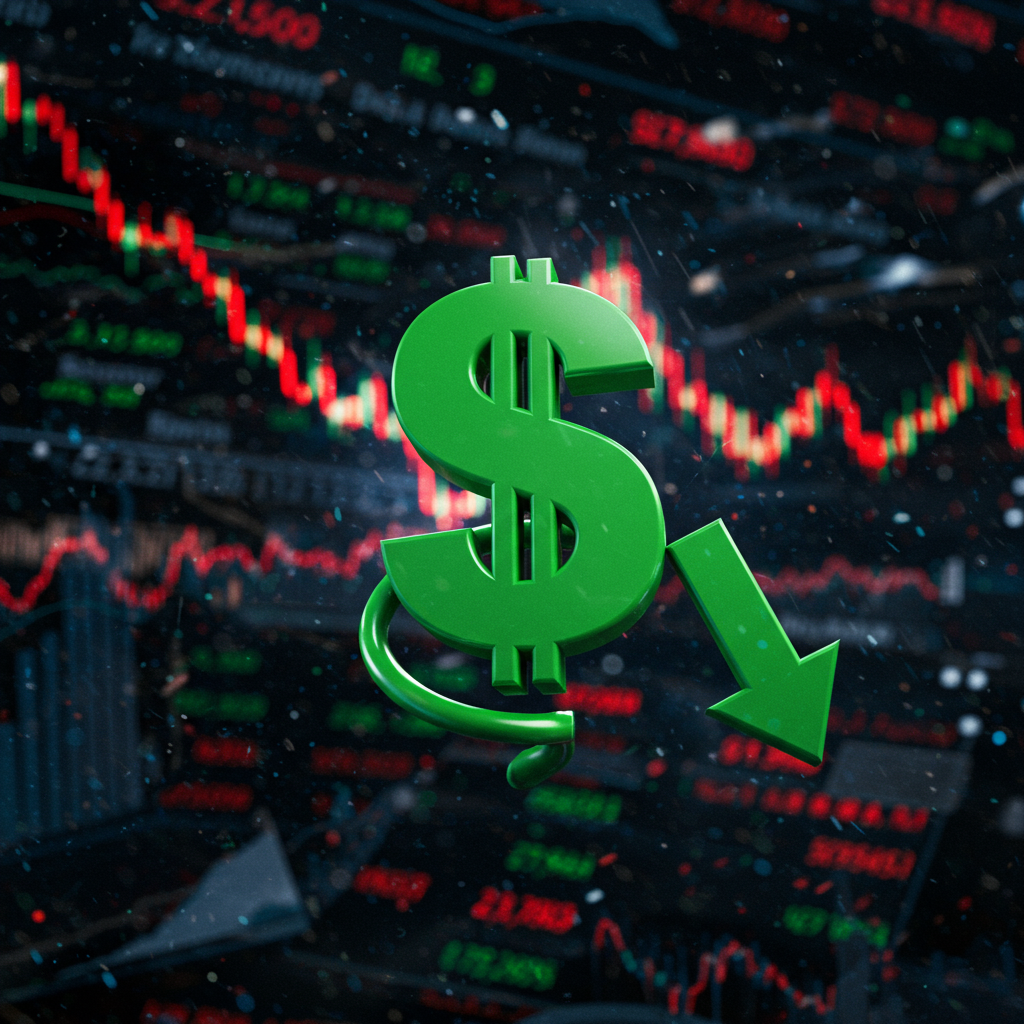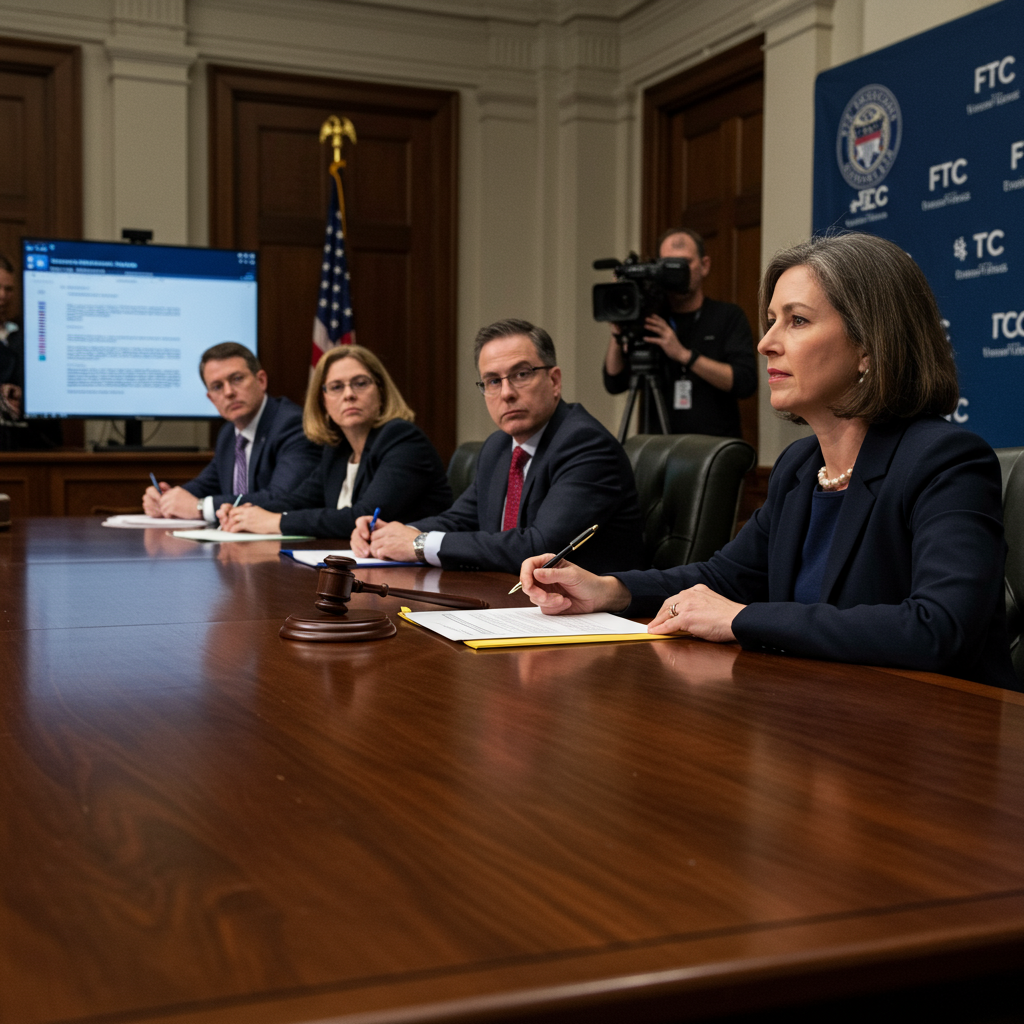The U.S. dollar recently posted its worst first-half performance in over five decades, a dramatic tumble last seen during the Nixon administration. This significant decline, facing mounting challenges, carries crucial implications for investors worldwide as the second half of the year unfolds. Understanding the forces behind the dollar’s weakening trajectory and its potential market effects is essential for navigating the complex global financial landscape.
The Dollar’s Steep Slide: A Historical Context
From January through June, the greenback depreciated sharply, plummeting 10.7% against a basket of major global currencies. This represented its weakest performance for the first six months of a year since 1973, a period marked by the historic shift away from the Bretton Woods gold standard. At one point during this downward trend, the U.S. currency touched its lowest value since February 2022, signaling a notable shift in market sentiment.
Why the Dollar Faced Pressure
A confluence of persistent factors contributed to this rapid depreciation. These include ongoing policy uncertainty stemming from Washington, rising levels of national debt and widening fiscal deficits, and the anticipation of potential interest rate cuts by the Federal Reserve later in the year. These elements collectively weighed on investor confidence regarding the dollar’s stability and future value.
Art Hogan, chief market strategist at B. Riley Wealth Management, noted that the dollar’s decline was perhaps overdue, fueled by a multitude of catalysts. He highlighted the large and seemingly unstoppable government deficits on both sides of the political spectrum as a major concern. Additionally, trade and military tensions that strain relationships with key allies add to the list of potential negative triggers. Once a downward momentum in a currency begins, Hogan explained, it becomes incredibly difficult to halt.
The dollar’s slide initiated around mid-January and has shown only brief periods of moderation. While hopes related to potential changes in tariff policies briefly sparked a rally in mid-April, the fundamental gravitational pull has kept the currency trending lower.
Key Factors Driving the Dollar’s Weakness
Several intertwined factors are creating a persistent headwind for the U.S. dollar. Beyond internal fiscal challenges, global dynamics and policy decisions play a significant role. The recent announcement of high tariffs on fourteen countries by President Trump, set to take effect August 1, introduces additional trade uncertainty that can impact currency valuations. While market reactions to these tariff announcements can be mixed, they contribute to a perception of policy volatility.
Furthermore, geopolitical events, such as the recent U.S. attacks on nuclear sites in Iran which escalated Middle East tensions in late June 2025, can cause shifts in global capital flows. Although initial fears might traditionally boost the dollar as a safe haven, the surprising lack of a stronger dollar response to such events suggests some investors are seeking alternatives, perhaps viewing Euro bonds as safer due to lower inflation concerns in Europe and attractive valuations.
The substantial U.S. public debt, nearing $30 trillion, coupled with the 2025 deficit projected near $2 trillion, fuels concerns about the long-term sustainability of the dollar’s dominance. This fiscal picture, alongside geopolitical risks and trade tensions, creates a challenging environment for the greenback.
Expert Perspectives: Navigating Currency Uncertainty
Market analysts hold varied views on the dollar’s future path, reflecting the complexity of the current environment. Some, like Art Hogan, see fundamental reasons for continued concern despite potential short-term rebounds.
Lawson Winder, a research analyst at Bank of America, pointed to specific investor behavior as evidence of shifting sentiment. Central banks globally have been aggressively increasing their gold reserves, purchasing 24 tons per month according to the World Gold Council. Winder believes this trend is driven by a desire to diversify reserves, reduce reliance on the dollar, and hedge against inflation and economic uncertainty. This move, he suggests, is likely to continue, particularly given ongoing uncertainty surrounding U.S. tariffs and fiscal deficits. This trend coincided with gold’s best first-half run since 1979.
Echoing a bearish outlook, TS Lombard is maintaining a “short” position on the dollar, describing it as “the gift that keeps on giving.” Daniel Von Ahlen, a senior macro strategist at the firm, cited political commentary regarding a weaker dollar as reinforcing this view. He argues the dollar remains overvalued based on most foreign exchange metrics and, with numerous negative factors, expects it could eventually become undervalued.
However, not all experts share this pessimistic view. Thomas Matthews, head of Asia Pacific markets at Capital Economics, suggested that the recent rally in equity markets indicates growing comfort with U.S. assets. He proposed the earlier dollar weakness might simply reflect the intended appreciation of other currencies or shifts in hedging strategies rather than a fundamental rejection of the dollar itself.
Wells Fargo analysts also dismissed fears of the dollar’s imminent decline in global prominence. Jennifer Timmerman, an investment strategy analyst at Wells Fargo, stated unequivocally that the dollar remains the “linchpin of global trade and finance” based on their statistical analysis. She emphasized the dollar’s deep-seated advantages, such as the rule of law, transparency, and a highly liquid financial market, which make a significant global shift away from it an “extremely difficult and slow-moving process.” This is especially true, she added, given underlying weaknesses in potential dollar alternatives.
Adding to the perspective that fluctuations are normal, Treasury Secretary Scott Bessent recently commented that the currency movements observed are “not out of the ordinary.” However, the persistent rise in Treasury yields alongside these comments suggests that market concerns over the dollar and other U.S. assets continue to linger beneath the surface.
The Dollar’s Impact on US Stocks and Global Markets
A weaker U.S. dollar isn’t uniformly negative, particularly for large American corporations with significant international exposure. Over 40% of revenue for S&P 500 companies originates from international sales. A depreciating dollar makes American exports more competitively priced in global markets, potentially boosting sales and earnings for these companies, especially in the context of ongoing trade disputes.
However, the dollar’s recent slide has coincided with increasing discussion about the potential decline of American exceptionalism and the end of dollar hegemony – the dollar’s status as the world’s primary reserve currency and unit of trade. The aforementioned high U.S. debt levels and persistent deficits fuel these concerns. Should global confidence in U.S. assets like the dollar and Treasury debt wane, it could have profound consequences for risk assets such as stocks.
Evidence of this potential shift includes the increased gold purchases by global central banks, directly cited as a strategy to diversify reserves away from the dollar. While Wells Fargo argues against a rapid de-dollarization, the trend of central banks acquiring alternative assets is a tangible sign of diversification efforts.
The dollar’s movements also significantly impact global markets. For example, when the dollar strengthened slightly amid escalating Middle East tensions in late June 2025, most Asia-Pacific currencies weakened against it. This included the Japanese yen, offshore yuan, Taiwanese dollar, South Korean won, Philippine peso, Malaysian ringgit, Indonesian rupiah, and Thai baht. This demonstrates how dollar strength or weakness directly affects exchange rates and economic competitiveness across the globe. The general decline seen in most Asia-Pacific stock markets during that period also underscored how U.S. actions and currency movements ripple through international finance.
Is the Dollar’s Downward Trend Guaranteed?
Despite the significant headwinds and bearish analyst calls, a continued dollar decline is not a certainty. Markets are dynamic, and factors could emerge to reverse the trend. The Federal Reserve’s potential interest rate decisions in the latter half of the year, while often seen as a downward pressure, can have complex and sometimes counterintuitive effects on the dollar and Treasury yields, as seen in previous rate cut cycles.
Some indicators suggest the market might be reaching a turning point. Art Hogan of B. Riley noted the dollar could be “overdone to the downside” in terms of momentum. The recent rally in U.S. stocks could also be interpreted as investors regaining confidence in American assets. Furthermore, volatility indicators like the CBOE Volatility Index (VIX) have shown declines, suggesting reduced expectations for near-term market swings compared to periods of high trade tension uncertainty seen earlier in the year.
Conversely, some signals point to persistent underlying concerns. Rising yields on Treasury debt can sometimes indicate worries about the value of those assets, including the currency in which they are denominated. Reports of substantial selling of U.S. stocks by foreign investors since early March, estimated at around $60 billion primarily by European investors, could represent a “substantial” risk to equity valuations and reflect a broader diversification away from U.S. assets, indirectly impacting dollar demand.
While the technical picture might suggest potential for a rebound, the fundamental concerns – deficits, debt, trade policy, geopolitical risk – remain significant factors that could continue to pressure the dollar moving forward.
Investing Implications: What the Dollar’s Path Means for Your Portfolio
The dollar’s trajectory has direct and indirect consequences for investment portfolios. For investors holding U.S. stocks, particularly those of large multinational corporations, a weaker dollar can be a tailwind, potentially boosting international earnings when converted back to dollars. However, concerns about the dollar’s global standing could introduce broader market volatility.
Diversification remains a key strategy. The actions of global central banks, increasing gold reserves as an alternative to dollar assets, serve as a model for individual investors seeking to hedge against currency fluctuations and potential instability. Exploring international assets, including bonds or equities denominated in potentially appreciating currencies (as suggested by some analysts favoring assets like Euro bonds), could offer diversification benefits.
Moreover, staying informed about U.S. fiscal policy developments, Federal Reserve actions, and shifts in global trade relations is critical. These factors heavily influence currency markets and, by extension, broader investment opportunities and risks. The ongoing debate among experts underscores that the dollar’s path is uncertain, requiring investors to consider multiple scenarios and maintain a diversified approach.
Frequently Asked Questions
What caused the significant decline in the U.S. dollar during the first half of the year?
The U.S. dollar experienced its sharpest first-half drop in 52 years due to a combination of factors. These included high U.S. national debt and growing fiscal deficits, uncertainty surrounding government policy and trade relations (like the announcement of new tariffs), and the market’s anticipation of potential interest rate cuts by the Federal Reserve. Geopolitical tensions also contributed to global market uncertainty impacting currency valuations.
How does a weaker U.S. dollar impact U.S. stock market performance?
A weaker U.S. dollar can be beneficial for large American companies, particularly those in the S&P 500 that generate a significant portion of their revenue internationally. It makes U.S. goods and services cheaper for foreign buyers, potentially increasing export sales and boosting earnings when converted back into U.S. dollars. This can provide a tailwind, especially during periods of trade tensions.
Should investors be concerned about the U.S. dollar losing its status as the world’s primary currency?
While some experts and market trends, like central banks increasing gold purchases, suggest a slow move towards diversification away from the dollar, others argue its status remains secure. Analysts at Wells Fargo point to the dollar’s fundamental strengths like rule of law, transparency, and market liquidity as enduring advantages. A rapid shift away from the dollar is considered extremely difficult, though the trend of central banks seeking alternatives is a notable development.



